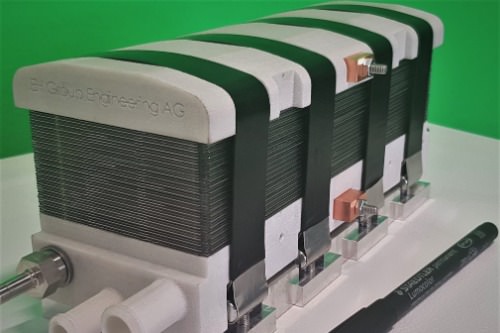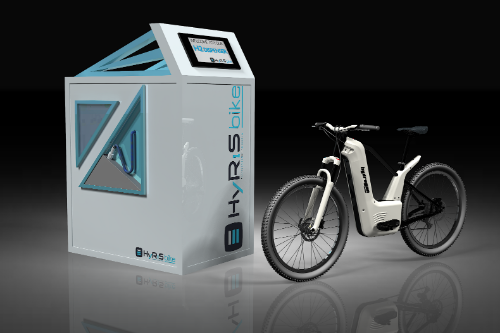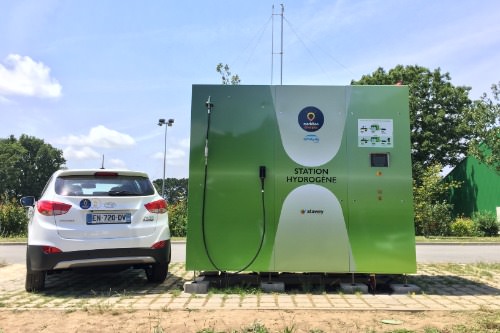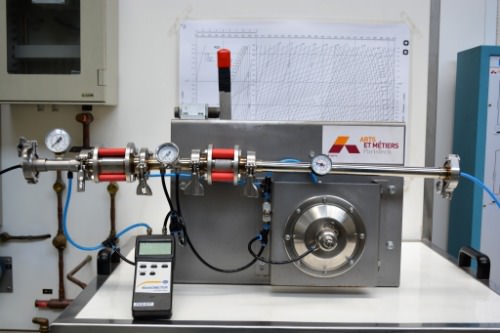Hydrogen mobility
How to shape the future of mobility?
Find out more about hydrogen mobility, the potential and challenges for its development, and how you can contribute to it.
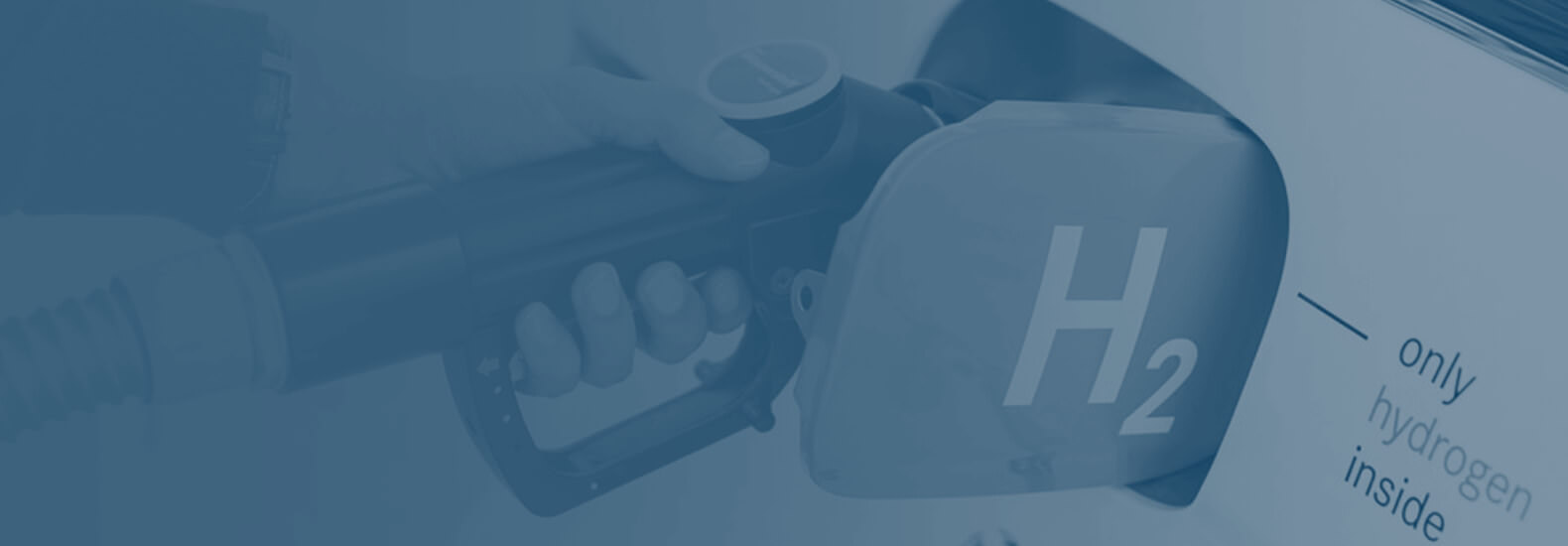
After the Dieselgate scandal, many cities such as Paris, Madrid, Oslo, Athens and Mexico have announced their intention to ban thermal engines. Hydrogen mobility could be the solution.
By 2030, the market share of hybrid or electric vehicles is expected to increase from 1% to 30%. By 2035, 450 million electric cars will be on the market.
For now, global hydrogen consumption is still low, less than 2% of global energy. But according to the Hydrogen Council, this consumption could reach 25% by 2050.
01. Solutions
Hydrogen mobility solutions
The Solar Impulse Label is granted to innovative solutions for hydrogen mobility that meet high standards of sustainability and profitability.
Each solution goes through a strict assessment process performed by independent experts.

02. Definition
What is hydrogen?

Hydrogen is the most abundant chemical element in the universe. It is a simple, gaseous body that enters into the composition of water.
Hydrogen is not a direct source of energy but rather an energy carrier. It serves primarily as a means of storing energy, especially for renewable energy when all their production can not be consumed. It can also be used to produce energy, to power hybrid vehicles or autonomous energy production systems. The heat produced during the hydrogen production process can also be used locally to heat buildings for example.

03. Production
How is hydrogen made?
Although massively present in its atomic form, pure hydrogen does not exist naturally on Earth. It must be produced by separating chemical elements, and stored before it can be used for mobility.
There are different ways to produce hydrogen:
- 1. Reforming natural gas with superheated steam, which is a widely used process.
- 2. In the gasification process, charcoal is burned in a reactor. At very high temperatures, the released gases reform to produce H2 and carbon monoxide.
- 3. Separating water into oxygen and hydrogen with electrolysis. This process is interesting as it makes it possible to easily obtain a pure hydrogen, and most importantly, is the only one to be totally carbon-free if the electricity is provided through renewable sources such as wind & solar.
How does a hydrogen fuel cell work?
As we mentioned before, hydrogen is not a fuel in itself. Then how is hydrogen fuel made?
Used in a fuel cell, an electricity-generating device using chemical reactions, H2 is converted into electricity and water vapor. The fuel cell principle is the opposite of electrolysis since it is based on the oxidation of a fuel and the reduction of an oxidant, resulting in the simultaneous production of electrical energy, water and heat.
04. Advantages
Advantages and benefits of hydrogen
The prospects for the hydrogen economy are good. It could play a major role in the energy transition since it has a high energy efficiency, emits no pollutants locally and can contribute to massively reducing greenhouse gas emissions.

Zero emission
The only emission from a fuel cell vehicle using hydrogen is water steam. Hydrogen is thus a clean fuel for cars without emissions of pollutants and greenhouse gases that contribute to climate change.

Fast refuelling
Hydrogen charging stations are quite similar to the traditional filling stations. As hydrogen vehicles don’t need to be plugged in to charge - unlike battery powered electric cars - the process of refuelling is quick.

Long driving range
Fuel-cell vehicles also have a longer range than battery powered electric cars. They now have a range of 500 to 800 km.

05. Challenges
Challenges & disadvantages
![]()
1. Polluting production process
Today, most hydrogen is produced in a conventional way, resulting from the combustion of fossil fuels, which releases a large amount of CO2. The main challenge is therefore to produce hydrogen using renewable energy sources like wind turbines and solar panels. This is the huge step towards green hydrogen that needs to be taken.
![]()
2. Lack of charging stations
There are only few charging stations in the world. Even if some governments have the will and invest in the construction of hydrogen charging stations, the demand is still low and these terminals do not generate enough profit for the moment.
![]()
3. Costly and highly inflammable
Compared with the production of hydrogen from natural gas, the production of hydrogen through renewable energies is very expensive and less efficient. Moreover, huge investments in lithium-ion battery technology are rapidly driving down the price of this segment of electric vehicles.
This causes a decline in the prices of conventional electric cars compared to electric hydrogen cars.
In addition, hydrogen remains extremely explosive. It must be stored and transported under pressure in bulky containers. This poses problems of security, logistics and profitability that still hinder its use.

A challenge, #1000 Solutionsto change the world

A label focused on both the environment and profitability.
For the first time a label proves the economic profitability of solutions that protect the environment. The Solar Impulse Foundation is selecting 1,000 solutions that protect the environment in a profitable way and awarding them the Solar Impulse Efficient Solutions Label.
Collaborating with independent experts and with renowned institutions, the World Alliance proposes to evaluate its members solutions free of charge. The Solar Impulse Efficient Solutions label will offer a competitive edge to innovators and a guarantee of quality to solution seekers.

A label focused on both the environment and profitability.




















